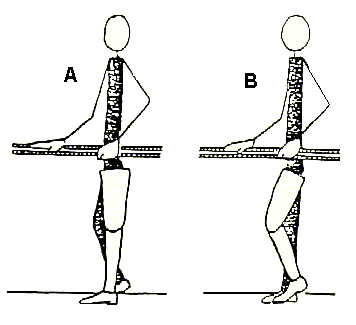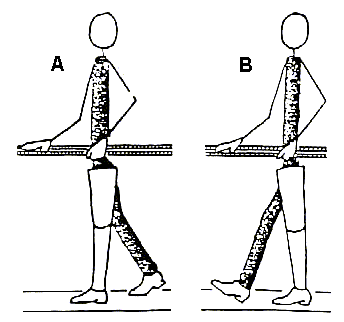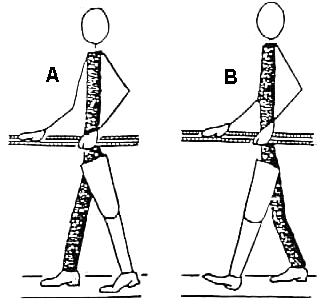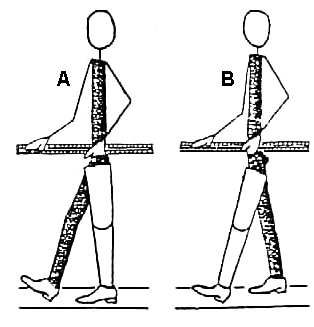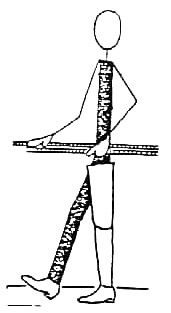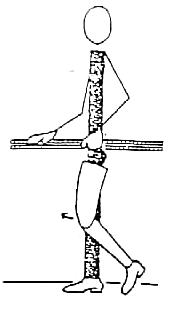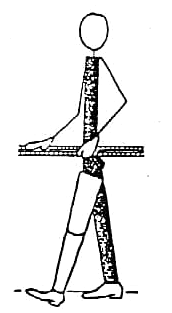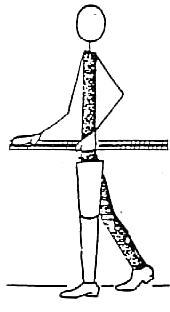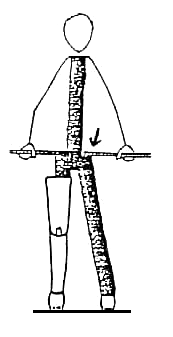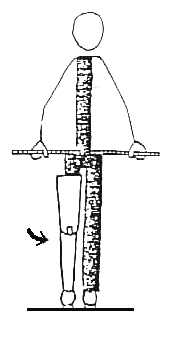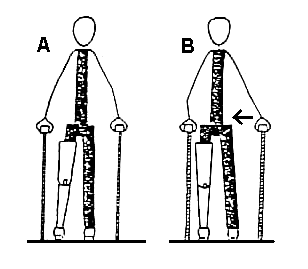
1. Stand between the parallel bars with feet 2-4 inches apart (A).
2. Shift weight laterally from the sound leg to the prosthesis (B).
3. Shift weight by moving the hips rather than the shoulders.
4. Keep the shoulders and pelvis level, and don't bend the sound knee.
5. Do not allow the trunk to sidebend, particularly toward the prosthetic side.
6. Practice shifting weight forward, backward, and diagonally in the same manner.
7. When the person becomes more comfortable, he or she can let go with the hand on the sound side. (This forces the person to accept weight on the prosthesis, and activates the residual limb's hip abductor muscles.) Progress to letting go of both hands.
1. Stand between the parallel bars with feet 2-4 inches apart (A).
2. Shift weight laterally from the sound leg to the prosthesis (B).
3. Shift weight by moving the hips rather than the shoulders.
4. Keep the shoulders and pelvis level, and don't bend the sound knee.
5. Do not allow the trunk to sidebend, particularly toward the prosthetic side.
6. Practice shifting weight forward, backward, and diagonally in the same manner.
7. When the person becomes more comfortable, he or she can let go with the hand on the sound side. (This forces the person to accept weight on the prosthesis, and activates the residual limb's hip abductor muscles.) Progress to letting go of both hands.
